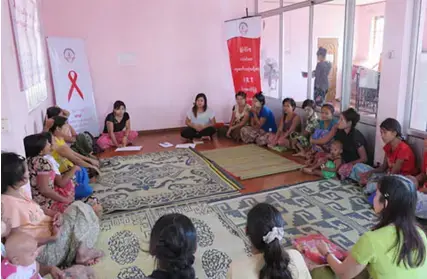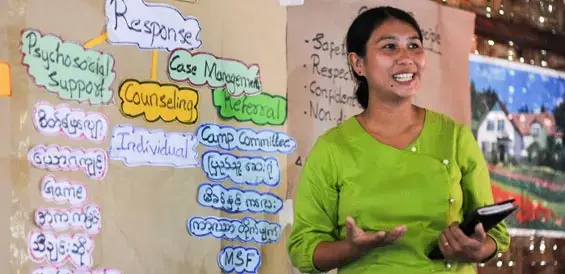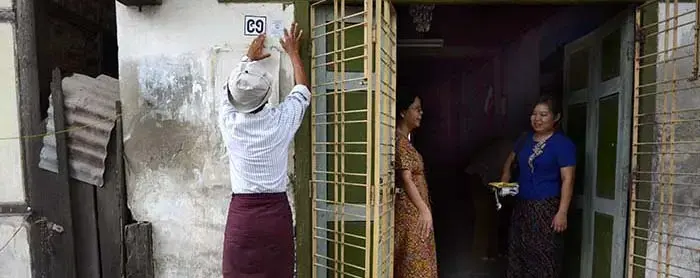HIV prevalence in the adult population aged 15 years and older was estimated at 0.54 per cent in 2014, a decline from 0.94 per cent in 2000. HIV in Myanmar is concentrated among key populations: people who inject drugs (23.1 per cent), men who have sex with men (6.6 per cent) and female sex workers (6.3 per cent). *
Interventions to reach key populations began on a large scale after 2000 with condom and harm reduction programmes. The main focus is on prevention of HIV transmission with the concept of the three zeros: zero new infections, zero AIDS related deaths and zero discrimination for those living with HIV. Mapping exercises and size estimation are used to reach key populations through targeted outreach programmes, drop in centres, HIV testing, and referrals to antiretroviral treatment services.
The criminalisation of sex work and the carrying of condoms as circumstantial evidence have resulted in sex workers not accessing health and other social services for fear of being arrested. This increases both their personal vulnerability to HIV and other sexually transmitted infections, as well as that of their clients.
UNFPA Activities
The comprehensive condom programme is a key priority for UNFPA because condoms are recognized as the only effective way to prevent HIV as well as other sexually transmitted infections and unintended pregnancy. Operating through both public and private entry points such as health clinics and drop in centres, UNFPA helps provide a consistent and affordable supply of condoms.
UNFPA has been working on HIV prevention among key populations, in particular female sex workers and their clients, since 2004. Recognizing the importance of involving beneficiaries in managing activities that affect their own lives, UNFPA works to engage community-based, sex-worker-led organizations programme design, implementation and monitoring.
Programmes promote safe behaviour and demand-generation for services, along with provision of those very services: access to condoms and lubricants, referrals to STI/HIV testing, antiretroviral treatment and other reproductive health services such as birth spacing support and opportunistic infections prevention. Other activities include information, counselling, social support, and capacity development of peer educators.
In 2015, UNFPA supported the development of national guidelines for HIV prevention among key populations. UNFPA also supports facilities that integrate different types of sexual and reproductive health services such as family planning, maternal health and HIV.
Reference
* Global AIDS Response Progress Report Myanmar 2015, National AIDS Programme






